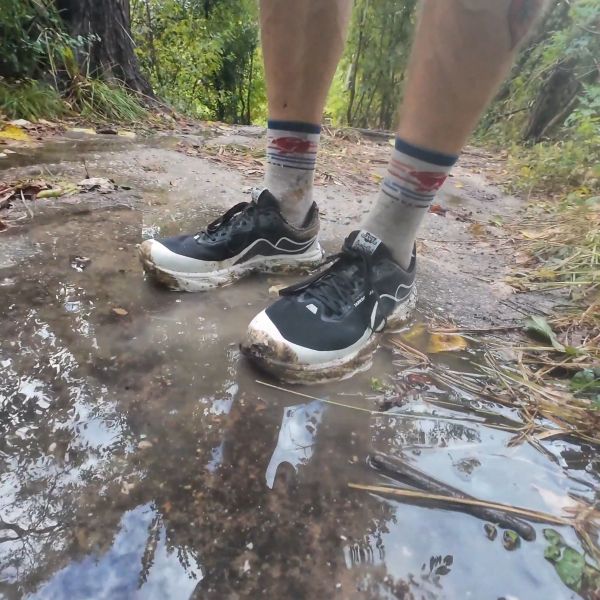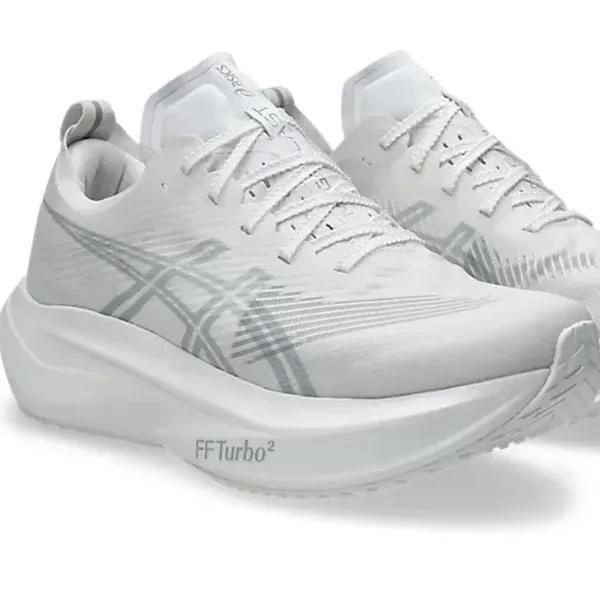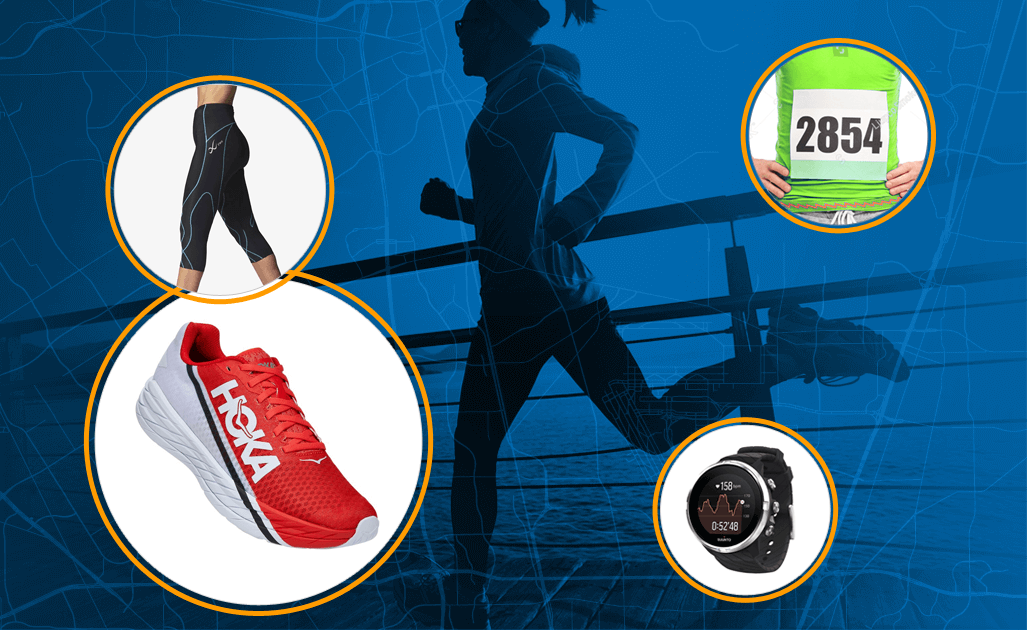Do you consider yourself a road runner or a trail runner? Most of us would likely put ourselves more in the road running category. There’s certainly nothing wrong with that, but don’t sell yourself short by never trying a trail run. After all, there's a significant benefit to cross-training between running on roads and trails. Let's take a look at the differences between these two running styles and how they complement each other.
It may seem a little obvious, but there is a tangible difference between running on the road and running on a trail. Road running is probably familiar to us all and simply involves using the streets, sidewalks, and other artificial surfaces to cover a certain distance in a specific time. These surfaces (minus the occasional pothole) are smooth and consistent, and there’s always some semblance of civilization nearby.
Trail running is not a jog on the paved path in your local park. It is a conscious effort to get away from everything else and find an unpaved trail to experience the natural world. These dirt paths are pocked with rocks, leaves, sand, gravel, roots, and the like. Flat, hilly, or otherwise, it involves the challenge of honing in on your run one step at a time as nature tests your resolve.
While not the case for everybody, road running seems to be more about the competition and getting the best time. It makes sense that you want to go faster because on a road you CAN go faster. While there may be some hills, running on pavement is a constant and allows you to focus on the mechanics of the run and not on what the terrain will do next.
Whether you like it or not, trail running is a different story. Sure, there’s still plenty of competition involved during a race, but getting away from the hustle and bustle on a trail just seems like a more calming, laid-back experience. It’s more about taking things one step at a time than focusing on the entire trail ahead of you. Many people say it’s also a great way to recharge mentally and spiritually.
It’s important to remember that roads and trails are two different running experiences. If you show up at a trailhead expecting to run the same distance as your typical road run and at the same pace, you're going to come away disappointed. Instead, throw any pace goals to the wind and go with just a distance or time goal in mind. Be sure to enjoy the scenery as you go.
On pavement, it's almost effortless to focus on a nice, long stride, using the entire foot to land and then propel you forward with the next step. Depending on how serious of a runner you are, you may even spend a lot of time perfecting that stride to minimize unnecessary movement.
Out on the trail, everything changes. Whenever quick movements are needed to overcome obstacles, it's necessary to switch to a shorter stride and rely on only the front of the foot. Strengthening these front muscles can help out with activation even on road runs and helps considerably with technical sections on any race. Besides, those quick movements improve reaction time which is a huge bonus on any run.
Road running shoes are designed to be light, airy, and flexible. The bottoms (or outsoles) of running shoes are relatively flat to create friction against the road, allowing you to propel yourself forward. The midsole, or cushioning on the sides and under the feet, is made soft to absorb impact from the road and keep your feet from moving around inside the shoe. The upper part of a road running shoe is typically a very thin mesh to allow feet to breathe.
It’s certainly okay to pull out a pair of old road running shoes for your first trips down the trail. Once you start to get a feel for things, it’s a wise idea to pick up a pair of shoes specifically for trail running. Take the time to choose the right running shoes for your foot and the terrain.
Trail running shoes are created with a much softer outsole to grip and bend around any unavoidable obstacle on the path. With the outsole being so flexible, the midsole is much more rigid to protect your feet against whatever you’re running on. The last big difference with trail shoes is the reinforced top material to deflect rocks, sticks, or anything else that may kick up during a run. Trails shoes are also often waterproof for those inevitable tromps through water.
It's relatively easy to prepare for running in the streets around your town. Check the temperature, watch for rain or snow, and wear whatever clothing fits the bill. Chances are, even if you chose your outfit poorly (or that freak storm comes in), you'll be able to tough it out or escape it pretty quickly if needed.
Unless you run the same trail quite often, you may be surprised at what you find out on your route. What is dry and hard one day can be wet and a sloppy mess the next. Seasonal changes or erosion can forever change the shape of a running path. Warm temperatures at the beginning can turn cool quickly (or vice versa!) with things like tree cover or changes in elevation.
Therefore, it's essential to plan for any uncertainty while out on a trail in nature. In addition to the trail running shoes we talked about earlier, bringing along something like a lightweight jacket to put on or take off can make a huge difference. It's always a good idea to wear socks that won't cause blisters when wet, and a headlamp can be a huge blessing if skies darken.
There’s something to be said for the convenience of lacing up those shoes, stepping out the front door, and taking off on a run. This is probably where most of us will spend the majority of our time running, and there’s nothing wrong with that. What’s important is that we are, in fact, running.
That being said, it's worth the time and effort to get out there and do a trail run at least once in a while. Let’s be honest, trail running isn’t always easy to get out and do. Unless you happen to live in the middle of nowhere, chances are there’s not a trail close by. Depending on the size of the city or town you live in, it can be quite inconvenient to get out to the nearest trailhead for that run. Won’t the fact that you got out there and did it anyway make it that much more rewarding?
Both street and trail running give your legs a nice workout and get that heart pumping. What many people don’t realize, however, is that while out on the trail you rely much more on your core to support your legs and give your body balance. The body is forced to twist and turn as you dodge roots, holes, and other uneven terrain, and your legs are forced to move in quick, sometimes unpredictable directions.
Pavement clearly wasn’t made with running in mind. The hard surface pounding against our feet as you run can wreak havoc on bones, joints, and muscles. Repeated running on concrete or asphalt might lead to knee pain, tendonitis, shin splints, or even a stress fracture. This is all the more reason why it’s beneficial to take to the trails from time to time and give your body a softer surface to run on.
Trail running is not without its danger, though, and there are a few things to consider before heading out. Especially in the first stages of your trail running career, it may feel like you’re learning to run all over again. Be prepared to fall. You may not see that low branch until it's too late. Since you'll be using different muscle groups, you'll hurt in new places even after the run. The important thing to remember is to get back up and have patience with yourself!
Road and trail running are two entirely different beasts, but they complement each other well. Improving your ability in one will see benefits in the other. Changing up your running routine from time to time keeps things fresh mentally and also helps prevent injury to your body. If you’re already doing both types of running, keep it up! If you find yourself doing only one, consider this a challenge to try something new!

Login to your account to leave a comment.





We Want to Give it to You!
